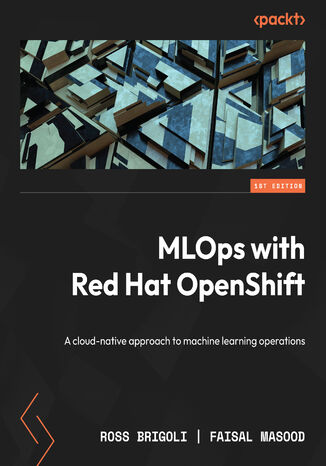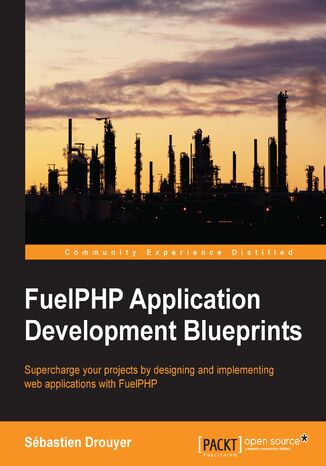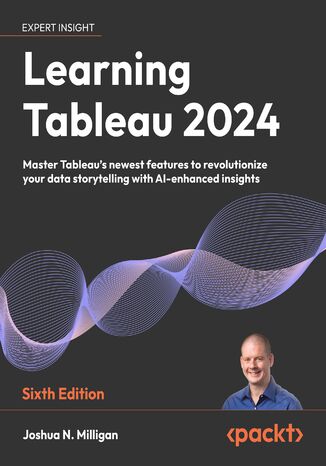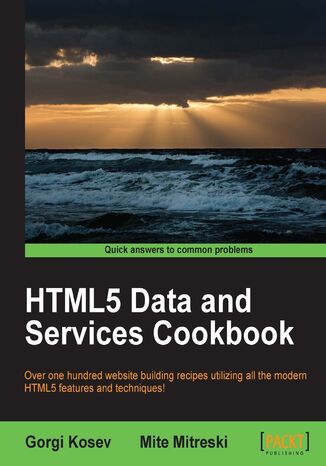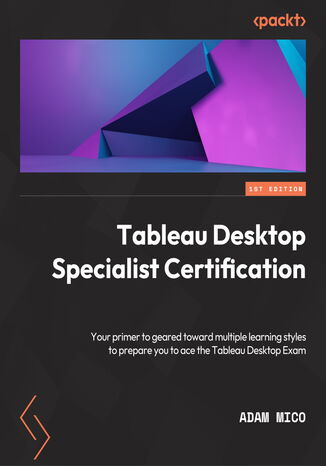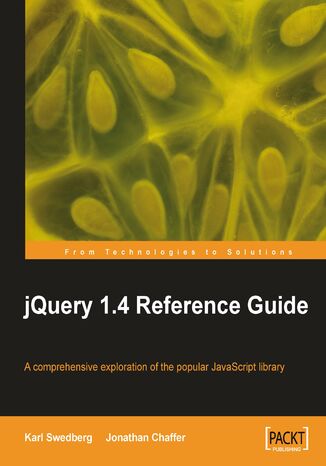Kategorien
-
- Bitcoin
- Geschäftsfrau
- Coaching
- Controlling
- E-Business
- Ökonomie
- Finanzen
- Börse und Investitionen
- Persönliche Kompetenzen
- Computer im Büro
- Kommunikation und Verhandlungen
- Kleines Unternehmen
- Marketing
- Motivation
- Multimedia-Training
- Immobilien
- Überzeugung und NLP
- Steuern
- Sozialpolitik
- Handbȕcher
- Präsentationen
- Führung
- Public Relation
- Berichte, Analysen
- Geheimnis
- Social Media
- Verkauf
- Start-up
- Ihre Karriere
- Management
- Projektmanagement
- Personal (HR)
-
- Architektura i wnętrza
- Sicherheit und Gesundheit am Arbeitsplatz
- Biznes i Ekonomia
- Haus und Garten
- E-Business
- Ekonomia i finanse
- Esoterik
- Finanzen
- Persönliche Finanzen
- Unternehmen
- Fotografie
- Informatik
- HR und Gehaltsabrechnung
- Frauen
- Computer, Excel
- Buchhaltung
- Kultur und Literatur
- Wissenschaftlich und akademisch
- Umweltschutz
- meinungsbildend
- Bildung
- Steuern
- Reisen
- Psychologie
- Religion
- Landwirtschaft
- Buch- und Pressemarkt
- Transport und Spedition
- Gesundheit und Schönheit
-
- Office-Programme
- Datenbank
- Bioinformatik
- IT Branche
- CAD/CAM
- Digital Lifestyle
- DTP
- Elektronik
- Digitale Fotografie
- Computergrafik
- Spiele
- Hacking
- Hardware
- IT w ekonomii
- Wissenschaftliche Pakete
- Schulbücher
- Computergrundlagen
- Programmierung
- Mobile-Programmierung
- Internet-Server
- Computernetzwerke
- Start-up
- Betriebssysteme
- Künstliche Inteligenz
- Technik für Kinder
- Webmaster
-
- Anthologien
- Ballade
- Biografien und Autobiografien
- Für Erwachsene
- Drama
- Tagebücher, Memoiren, Briefe
- Epos
- Essay
- Science Fiction
- Felietonys
- Fiktion
- Humor, Satire
- Andere
- Klassisch
- Krimi
- Sachbücher
- Belletristik
- Mity i legendy
- Nobelpreisträger
- Kurzgeschichten
- Gesellschaftlich
- Okultyzm i magia
- Erzählung
- Erinnerungen
- Reisen
- Gedicht
- Poesie
- Politik
- Populärwissenschaftlich
- Roman
- Historischer Roman
- Prosa
- Abenteuer
- Journalismus
- Reportage
- Romans i literatura obyczajowa
- Sensation
- Thriller, Horror
- Interviews und Erinnerungen
-
- Archäologie
- Bibliotekoznawstwo
- Filmwissenschaft
- Philologie
- Polnische Philologie
- Philosophie
- Finanse i bankowość
- Erdkunde
- Wirtschaft
- Handel. Weltwirtschaft
- Geschichte und Archäologie
- Kunst- und Architekturgeschichte
- Kulturwissenschaft
- Linguistik
- Literaturwissenschaft
- Logistik
- Mathematik
- Medizin
- Geisteswissenschaften
- Pädagogik
- Lehrmittel
- Populärwissenschaftlich
- Andere
- Psychologie
- Soziologie
- Theatrologie
- Teologie
- Theorien und Wirtschaftswissenschaften
- Transport i spedycja
- Sportunterricht
- Zarządzanie i marketing
-
- Sicherheit und Gesundheit am Arbeitsplatz
- Geschichte
- Verkehrsregeln. Führerschein
- Rechtswissenschaften
- Gesundheitswesen
- Allgemeines. Wissenskompendium
- akademische Bücher
- Andere
- Bau- und Wohnungsrecht
- Zivilrecht
- Finanzrecht
- Wirtschaftsrecht
- Wirtschafts- und Handelsrecht
- Strafrecht
- Strafrecht. Kriminelle Taten. Kriminologie
- Internationales Recht
- Internationales und ausländisches Recht
- Gesundheitsschutzgesetz
- Bildungsrecht
- Steuerrecht
- Arbeits- und Sozialversicherungsrecht
- Öffentliches, Verfassungs- und Verwaltungsrecht
- Familien- und Vormundschaftsrecht
- Agrarrecht
- Sozialrecht, Arbeitsrecht
- EU-Recht
- Industrie
- Agrar- und Umweltschutz
- Wörterbücher und Enzyklopädien
- Öffentliche Auftragsvergabe
- Management
-
- Afrika
- Alben
- Südamerika
- Mittel- und Nordamerika
- Australien, Neuseeland, Ozeanien
- Österreich
- Asien
- Balkan
- Naher Osten
- Bulgarien
- China
- Kroatien
- Tschechische Republik
- Dänemark
- Ägypten
- Estland
- Europa
- Frankreich
- Berge
- Griechenland
- Spanien
- Niederlande
- Island
- Litauen
- Lettland
- Mapy, Plany miast, Atlasy
- Miniführer
- Deutschland
- Norwegen
- Aktive Reisen
- Polen
- Portugal
- Andere
- Przewodniki po hotelach i restauracjach
- Russland
- Rumänien
- Slowakei
- Slowenien
- Schweiz
- Schweden
- Welt
- Türkei
- Ukraine
- Ungarn
- Großbritannien
- Italien
-
- Lebensphilosophien
- Kompetencje psychospołeczne
- zwischenmenschliche Kommunikation
- Mindfulness
- Allgemeines
- Überzeugung und NLP
- Akademische Psychologie
- Psychologie von Seele und Geist
- Arbeitspsychologie
- Relacje i związki
- Elternschafts- und Kinderpsychologie
- Problemlösung
- Intellektuelle Entwicklung
- Geheimnis
- Sexualität
- Verführung
- Aussehen ind Image
- Lebensphilosophien
-
- Bitcoin
- Geschäftsfrau
- Coaching
- Controlling
- E-Business
- Ökonomie
- Finanzen
- Börse und Investitionen
- Persönliche Kompetenzen
- Kommunikation und Verhandlungen
- Kleines Unternehmen
- Marketing
- Motivation
- Immobilien
- Überzeugung und NLP
- Steuern
- Sozialpolitik
- Handbȕcher
- Präsentationen
- Führung
- Public Relation
- Geheimnis
- Social Media
- Verkauf
- Start-up
- Ihre Karriere
- Management
- Projektmanagement
- Personal (HR)
-
- Anthologien
- Ballade
- Biografien und Autobiografien
- Für Erwachsene
- Drama
- Tagebücher, Memoiren, Briefe
- Epos
- Essay
- Science Fiction
- Felietonys
- Fiktion
- Humor, Satire
- Andere
- Klassisch
- Krimi
- Sachbücher
- Belletristik
- Mity i legendy
- Nobelpreisträger
- Kurzgeschichten
- Gesellschaftlich
- Okultyzm i magia
- Erzählung
- Erinnerungen
- Reisen
- Poesie
- Politik
- Populärwissenschaftlich
- Roman
- Historischer Roman
- Prosa
- Abenteuer
- Journalismus
- Reportage
- Romans i literatura obyczajowa
- Sensation
- Thriller, Horror
- Interviews und Erinnerungen
-
- Archäologie
- Philosophie
- Wirtschaft
- Handel. Weltwirtschaft
- Geschichte und Archäologie
- Kunst- und Architekturgeschichte
- Kulturwissenschaft
- Literaturwissenschaft
- Mathematik
- Medizin
- Geisteswissenschaften
- Pädagogik
- Lehrmittel
- Populärwissenschaftlich
- Andere
- Psychologie
- Soziologie
- Teologie
- Zarządzanie i marketing
-
- Lebensphilosophien
- zwischenmenschliche Kommunikation
- Mindfulness
- Allgemeines
- Überzeugung und NLP
- Akademische Psychologie
- Psychologie von Seele und Geist
- Arbeitspsychologie
- Relacje i związki
- Elternschafts- und Kinderpsychologie
- Problemlösung
- Intellektuelle Entwicklung
- Geheimnis
- Sexualität
- Verführung
- Aussehen ind Image
- Lebensphilosophien
Juan Bravo Vargas, Mariano Martínez Melo, Tommy Skaue
Meeting delivery commitments has become increasingly challenging due to evolving demands and fluctuating material availability. As a result, establishing robust systems and processes that can adapt to this dynamic environment has become a necessity. With Becoming a Dynamics 365 Supply Chain Management Functional Consultant Associate, you’ll understand how to initiate and implement effective supply chain management processes.This book begins with an overview of the processes and modules within Dynamics 365 and then delves into real-life case studies involving procurement, sales, and quality assurance. You’ll explore more advanced tools and core processes, such as warehouse and transportation management, which allows you to define storage flows and shipping controls. You’ll also learn about the various tools available to define solutions and discover how to work within the Dynamics 365 Supply Chain Management platform. The last set of chapters will take you through the planning techniques and considerations to schedule and control all supply process flows seamlessly.By the end of this book, you’ll not only be well-prepared to obtain your certification as a Microsoft Dynamics 365 Supply Chain Management Functional Consultant Associate but also be equipped to solidify your expertise and pursue exciting career opportunities.
MLOps with Red Hat OpenShift. A cloud-native approach to machine learning operations
MLOps with OpenShift offers practical insights for implementing MLOps workflows on the dynamic OpenShift platform. As organizations worldwide seek to harness the power of machine learning operations, this book lays the foundation for your MLOps success. Starting with an exploration of key MLOps concepts, including data preparation, model training, and deployment, you’ll prepare to unleash OpenShift capabilities, kicking off with a primer on containers, pods, operators, and more.With the groundwork in place, you’ll be guided to MLOps workflows, uncovering the applications of popular machine learning frameworks for training and testing models on the platform.As you advance through the chapters, you’ll focus on the open-source data science and machine learning platform, Red Hat OpenShift Data Science, and its partner components, such as Pachyderm and Intel OpenVino, to understand their role in building and managing data pipelines, as well as deploying and monitoring machine learning models.Armed with this comprehensive knowledge, you’ll be able to implement MLOps workflows on the OpenShift platform proficiently.
Tableau 2025 marks a new era in data visualization and analysis, bringing together advanced AI integrations and dynamic user experiences. This sixth edition, written by Tableau Visionary and Zen Master Joshua Miligan, is an end-to-end guide to mastering the latest innovations in Tableau that transform raw data into actionable insights.This edition introduces groundbreaking features like Tableau AI (including Tableau Pulse and Tableau Agent), enhancing your analytical capabilities with AI-driven data exploration and automated insights. With detailed walkthroughs, you’ll learn to build dynamic dashboards that respond to your data in real time and work with sophisticated AI functionalities that predict trends and model scenarios.Whether you're a seasoned data professional or new to Tableau, this book provides the tools you need to leverage Tableau’s full potential. From integrating diverse data sources using the enhanced data model to employing advanced geospatial functions for detailed mapping, every chapter is packed with expert knowledge and practical applications designed to put powerful analytics at your fingertips.
HTML5 is everywhere. From PCs to tablets to smartphones and even TVs, the web is the most ubiquitous application platform and information medium bar. Its becoming a first class citizen in established operating systems such as Microsoft Windows 8 as well as the primary platform of new operating systems such as Google Chrome OS.HTML5 Data and Services Cookbook contains over 100 recipes explaining how to utilize modern features and techniques when building websites or web applications. This book will help you to explore the full power of HTML5 - from number rounding to advanced graphics to real-time data binding.HTML5 Data and Services Cookbook starts with the display of text and related data. Then you will be guided through graphs and animated visualizations followed by input and input controls.Data serialization, validation and communication with the server as well as modern frameworks with advanced features like automatic data binding and server communication will also be covered in detail.This book covers a fast track into new libraries and features that are part of HTML5!
The Tableau Desktop Specialist certification is fundamental for any data visualization professional who works in the field with Tableau.This book gets you started by covering the exam format, Tableau basics, and best practices for preparing data for analysis and visualization. It also builds on your knowledge of advanced Tableau topics to get you up to speed with the essential domains and domain objectives. Although the guide provides an outline and starting point to key in on what needs to be understood before the examination, it also delivers in context to give you a strong understanding of each piece before taking the exam. Instructions on how to get hands on with examples, a common data source, and suggested elements are also included. Understanding the concepts will not only assist you in passing the examination, but will also help you work effectively with the tool in your workspace.By the end of this book, you'll be able to efficiently prepare for the certification exam with the help of mock tests, detailed explanations, and expert advice from the author.
Jonathan Chaffer, Karl Swedberg, jQuery Foundation
If you are looking for a comprehensive reference guide to this popular JavaScript library, this book and eBook is for you.To make optimal use of jQuery, it's good to keep in mind the breadth of capabilities it provides. You can add dynamic, interactive elements to your sites with reduced development time using jQuery.Revised and updated for version 1.4 of jQuery, this book offers an organized menu of every jQuery method, function, and selector. Each method and function is introduced with a summary of its syntax and a list of its parameters and return value, followed by a discussion, with examples where applicable, to assist in getting the most out of jQuery and avoiding the pitfalls commonly associated with JavaScript and other client-side languages.In this book you will be provided information about the latest features of jQuery that include Sizzle Selector, Native event delegation, Event triggering, DOM manipulation, and many more. You won't be confined to built-in functionality, you'll be able to examine jQuery's plug-in architecture and we discuss both how to use plug-ins and how to write your own. If you're already familiar with JavaScript programming, this book will help you dive right into advanced jQuery concepts. You'll be able to experiment on your own, trusting the pages of this book to provide information on the intricacies of the library, where and when you need it.This book is a companion to Learning jQuery 1.3. Learning jQuery 1.3 begins with a tutorial to jQuery, where the authors share their knowledge, experience, and enthusiasm about jQuery to help you get the most from the library and to make your web applications shine.jQuery 1.4 Reference Guide digs deeper into the library, taking you through the syntax specifications and following up with detailed discussions. You'll discover the untapped possibilities that jQuery 1.4 makes available, and polish your skills as you return to this guide time and again.
Banana Pro Blueprints. Leverage the capability of Banana Pi with exciting real-world projects
Gareth Halfacree, Ruediger Follmann, Gianluca Falasca, Teng Zhang, ...
This book follows a tactical plan that will guide you through the implementation of Banana Pro and its configurations. You will then learn the various programming languages used with Banana Pi with the help of examples. In no time at all, you’ll be working on a wireless project that implements AirPlay servers, hotspots, and so on. Following this, you’ll develop a retro-style arcade kiosk game. Then we’ll move on to explore the multimedia features of Banana Pro by designing and building an enclosure for it. After this, you’ll learn to build a remote-controlled smart car and we’ll examine how to control a robotic arm. The book will conclude with the creation of a home sensor system that has the ability to expand or shrink to suit any home.


